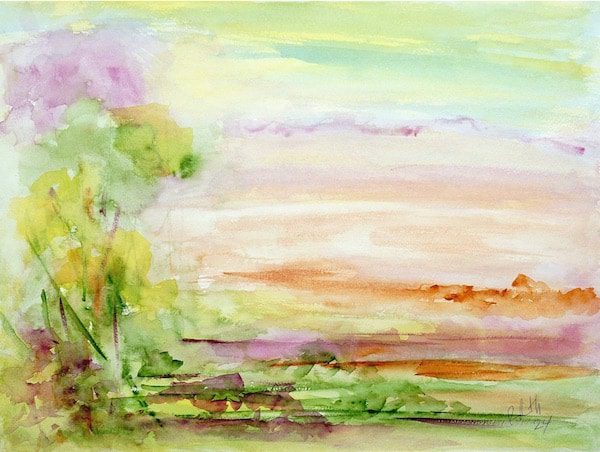Abstract Impressionism is a captivating art movement that began in the mid-20th century, combining elements of both Abstract Art and Impressionism. This unique style emphasizes emotion, color, and spontaneity, where artists express their innermost feelings through vibrant brushstrokes, vivid colors, and dynamic compositions. In this blog post, we explore what Abstract Impressionism is, its key characteristics, and some of the most influential artists associated with this fascinating movement.
What is Abstract Impressionism?
The Impressionist movement of the 19th century captured the fleeting effects of light and atmosphere, particularly in landscape painting. Abstract Impressionism involves painting these subjects in an Impressionist style, but focusing on abstraction to some degree. Unlike pure Abstract Art, the subjects in an Abstract Impressionist painting are recognizable. While Impressionist artists painted scenes from nature and everyday life, Abstract Impressionists moved away from representational art, opting instead for a more personal and subjective approach.
The Roots of Abstract Impressionism
Abstract Impressionism began in the 1940s and 1950s, primarily in the United States, as artists sought new ways to break free from the constraints of traditional painting methods. This period marked a significant shift in the art world, as artists now experimented with color, form, and technique, leading to the birth of Abstract Expressionism and, subsequently, Abstract Impressionism.
Key Characteristics of Abstract Impressionism
Understanding Abstract Impressionism involves recognizing several defining characteristics:
Emphasis on Color: Color is a primary focus in Abstract Impressionism, evoking emotions and creating a specific mood. Artists use bold, vibrant hues and sometimes even unconventional color combinations creating interest in the scene and drawing viewers in.
Loose Brushwork: Unlike precise and controlled techniques, Abstract Impressionism is marked by loose, energetic brushstrokes that convey a sense of movement and spontaneity. This technique invites viewers to experience the artwork in a more emotional way.
Recognizable Forms: Although there is a strong focus on abstraction, the subjects depicted are recognizable.
Light and Shadow: Abstract Impressionism utilizes contrasts between light and shadow as an aid in composition and creating drama.
Influential Artists of Abstract Impressionism
Elaine de Kooning (1918-1989)


Patrick Heron (1920-1999)


Nicolas de Staël (1914-1955)


Images by Kooning, Heron, and de Staël used under Fair Use license.
What is Abstract Impressionism in a Nutshell?
Briefly stated, Abstract Impressionism is a beautiful synthesis of Abstract Art and Impressionism, combining elements of abstract art with the spontaneity and emotional depth of Impressionism. Artists in this genre prioritize the act of painting itself, utilizing innovative techniques expressing their unique vision. The result is a dynamic blend of colors, shapes, and textures that evoke emotion and provoke thought.

More on Impressionism – Modern Impressionism: A New Look at a Timeless Art Movement
Follow me on Instagram
Discover more from Rhonda Roth Art
Subscribe to get the latest posts sent to your email.